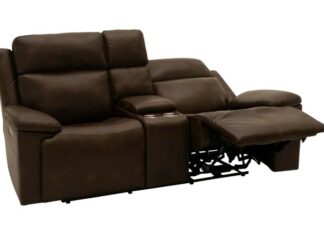Moving is a chance to start over and explore new possibilities. This is especially true if you are moving from a location like Miami. Saying goodbye to this lively city can be a bittersweet experience. While Miami is home to a vibrant cultural scene and beautiful beaches, it’s not an easy place to live for everyone. The never-ending traffic can be quite a challenge, and the intense summer heat can be tough to handle.
When you’re planning to move, especially long-distance, it’s important to get rid of clutter and organize well ahead of time to ensure a smooth transition. Here are some easy tips to help you get started!
1. Create a Moving Inventory
Table of Contents
Creating a moving inventory is basically a detailed list of all your belongings. This step is more than just a task; it’s a tool that can make your moving process easier and faster. The list helps you keep track of every item, making sure nothing gets misplaced.
Also, it gives you a chance to evaluate what’s really necessary, which is key for decluttering. Now, Miami is known for its warm beaches, lively nightlife, diverse culture, and tropical climate that feels like paradise. It’s a city where every day seems like a vacation.
Yet, despite these alluring aspects, many residents find themselves exploring new horizons. With Miami’s cost of living being 21% above the national average, some opt to move to more affordable regions or even look internationally for better lifestyle opportunities and career growth.
An international move brings its own challenges; the task of deciding what to keep can confuse you even more. In such situations, hiring a reputable Miami international moving company can be invaluable. They not only ensure a smooth relocation but can also advise on what to bring along, making the decluttering process more straightforward and effective.
2. Start Early
Initiating decluttering and organizing well in advance is one of the wisest decisions you can make when planning a move. Why? Starting early provides you with the luxury of time. It means you aren’t pressed into making hurried decisions about what to keep or discard.
This early start also reduces the chances of feeling overwhelmed as the moving day approaches. By giving yourself a head start, you can methodically go through your belongings, room by room, ensuring that you’re only taking what’s necessary to your new home.
Additionally, it allows for potential hiccups, like unexpected commitments or events, without throwing your entire schedule off track.
3. Sort Items by Category
Categorizing items brings clarity. For example, gathering all the books into one pile helps identify duplicates or titles you no longer wish to keep.
Likewise, grouping kitchen gadgets together can help you identify the ones that you hardly ever use. This approach makes the decluttering process more organized and effective.
Also, when you finally start packing, having items sorted this way can speed up the process.
4. Follow the One-Year Rule
The one-year rule is very simple: if you have not used or worn an item in the last year, it’s time to think about getting rid of it. This rule works especially well for items like clothing, gadgets, or kitchen tools.
Over time, we collect things that may have been useful or fashionable at one point, but as months go by, their importance fades. By following the one-year rule, you can quickly spot items that are no longer adding value to your life.
It’s a practical method that reduces the amount of stuff you’ll need to pack and helps create a more organized and clutter-free environment in your new home.
5. Digitalize Documents and Photos
Physical documents and old photo albums can take up significant room, and every bit of space counts during a move. Scanning these items creates digital copies that are easy to store, access, and share.
Additionally, digital versions are safer in many ways; they’re immune to physical wear and tear and can be backed up on multiple platforms, ensuring their longevity. If you face a situation where certain documents get misplaced during the move, having a digital backup is invaluable.
Transitioning to a digital archive reduces the burden of carrying cumbersome folders and albums, making your move lighter and more efficient. Plus, it’s an eco-friendly approach, minimizing paper use and waste.
6. Set Up a Donation Station
Instead of discarding items that are no longer serving a purpose, consider setting up a donation station in your home. This can be as simple as designating a box or a specific corner where you place items you wish to donate.
As you sort through your belongings, you can easily add to this station. Once you’re done, or when the box is full, these items can be donated to local charities, shelters, or community centers.
Not only does this method prevent wastage, but it also gives your items a second life in the hands of someone who might need them.
7. Host a Garage Sale
As you sift through your items, you’ll likely find things that are in sellable condition but no longer needed. Instead of letting them gather dust, a garage sale offers an opportunity to convert these items into cash.
It’s a win-win: You reduce the volume of items to move and earn some extra funds that can be put toward your relocation expenses. Preparing for the sale requires some organization—price items reasonably, display them neatly, and advertise your sale locally.
8. Think About the New Space
Every home or apartment has its unique structure and storage capacity. By visualizing where your current items will fit in the new environment, you can make informed decisions about what to keep and what to let go.
For instance, that large sectional sofa might not fit in a cozier living room, or you might find your new kitchen has half the cabinet space. Understanding these nuances ahead of time can prevent the hassle of relocating items that won’t have a proper place.
9. Pack an Essentials Box
An essentials box is a go-to kit containing items you’ll need immediately upon arrival at your new place. This box should have everyday necessities like toiletries, a change of clothes, medications, chargers, and perhaps some basic kitchen utensils.
The idea is to avoid rummaging through multiple boxes, looking for a toothbrush or a phone charger on your first night. An essentials box helps you settle into your new home and unpack without stress.
Conclusion
Moving offers a fresh start, but it demands careful planning. The process becomes smoother by decluttering, organizing, and considering the space you’re moving to. Digital tools, essential boxes, and thoughtful disposal methods simplify the journey.
Whether you’re moving next door or abroad, a well-prepared move paves the way for a seamless transition and new beginnings. Stay tuned to our blog for upcoming articles for informative pieces of content.











